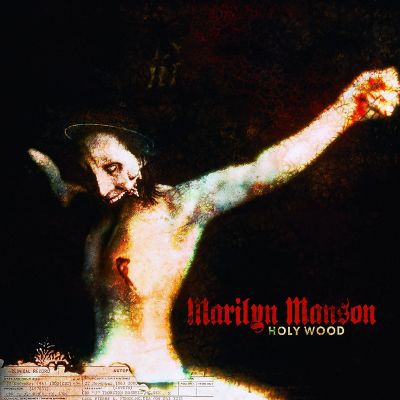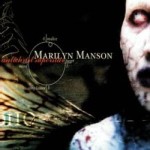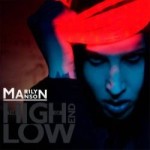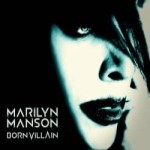Holy Wood (In the Shadow of the Valley of Death) Review
| Band | |
|---|---|
| Album |  Holy Wood (In the Shadow of the Valley of Death) |
| Type | Album (Studio full-length) |
| Released | November 14, 2000 |
| Genres | Industrial Rock, Industrial Metal |
| Labels | Nothing Records, Interscope Records |
| Length | 1:09:11 |
| Ranked | #17 for 2000 , #628 all-time |
Album rating : 90.2 / 100
Votes : 25 (3 reviews)
Votes : 25 (3 reviews)
January 13, 2025
Marilyn Manson’s third album in his original triptych, although chronologically this is the first in the story. A myriad of drama surrounds this album, with the columbine massacre occurring the previous year in which Manson was blamed. The album and concept is deeply layered within a tale exploring celebrity, consumerism, death, and much more. But writing about the history, context, and story of the album could fill a research paper – and you can find it all on Wikipedia anyway – so I’ll write instead about how I feel about the music.
The album opens with many of the most “normal” sounding songs that would become classics defining the band’s sound. “The love Song,” “The Fight Song,” and “Disposable Teens” are all the most easily consumed and straightforward Rock songs on the album. They’ve got a driving, darkly uplifting aura to them like a call to arms for disenfranchised misfits. Not my favorite songs on the album, but they do a great job opening things up.
It gets a lot more interesting in the next chapter. “Target Audience” is darker, gloomier, and heavier, and title track “In the Shadow of the Valley of Death” is plainly one of the most depressing songs I’ve ever heard, and remains among my top 5 Manson songs of all time. Perfect atmosphere and emotion on that track. The following two tracks in the second chapter explore a more weird and artsy direction for the album.
The third chapter is my favorite. It’s got the anthemic “The Nobodies,” the beautifully sad “Lamb of God,” and the most aggressive track on the album “Burning Flag.” This chapter is the most consistent with zero filler, all the tracks are memorable, unique, and full of passion. The fourth and final chapter contains the magnificent “Coma Black,” a sequel (or prequel actually) to Mechanical Animals closer “Coma White.” The album concludes in a trilogy of shorter simpler tracks that aren’t as memorable at first, but over the years I’ve come to really enjoy how they flow together and snuff out the burning fire of Holy Wood.
Definitely one of Manson’s best albums, and includes so many of the band’s all-time best songs. Also astounding that despite being 19 tracks long, there isn’t one track I would call filler or bad. A fantastic concept album full of individual tracks easily enjoyed all on their own.
The album opens with many of the most “normal” sounding songs that would become classics defining the band’s sound. “The love Song,” “The Fight Song,” and “Disposable Teens” are all the most easily consumed and straightforward Rock songs on the album. They’ve got a driving, darkly uplifting aura to them like a call to arms for disenfranchised misfits. Not my favorite songs on the album, but they do a great job opening things up.
It gets a lot more interesting in the next chapter. “Target Audience” is darker, gloomier, and heavier, and title track “In the Shadow of the Valley of Death” is plainly one of the most depressing songs I’ve ever heard, and remains among my top 5 Manson songs of all time. Perfect atmosphere and emotion on that track. The following two tracks in the second chapter explore a more weird and artsy direction for the album.
The third chapter is my favorite. It’s got the anthemic “The Nobodies,” the beautifully sad “Lamb of God,” and the most aggressive track on the album “Burning Flag.” This chapter is the most consistent with zero filler, all the tracks are memorable, unique, and full of passion. The fourth and final chapter contains the magnificent “Coma Black,” a sequel (or prequel actually) to Mechanical Animals closer “Coma White.” The album concludes in a trilogy of shorter simpler tracks that aren’t as memorable at first, but over the years I’ve come to really enjoy how they flow together and snuff out the burning fire of Holy Wood.
Definitely one of Manson’s best albums, and includes so many of the band’s all-time best songs. Also astounding that despite being 19 tracks long, there isn’t one track I would call filler or bad. A fantastic concept album full of individual tracks easily enjoyed all on their own.
 2 likes
2 likesTrack listing (Songs)
| title | rating | votes | video | ||
|---|---|---|---|---|---|
| In the Shadow: A | |||||
| 1. | Godeatgod | 2:34 | 87.8 | 11 | Audio |
| 2. | The Love Song | 3:16 | 94.4 | 11 | Audio |
| 3. | The Fight Song | 2:55 | 96.1 | 11 | Audio |
| 4. | Disposable Teens | 3:01 | 92.5 | 10 | Audio Music Video |
| The Androgyne: D | |||||
| 5. | Target Audience (Narcissus Narcosis) | 4:18 | 88.8 | 10 | Audio |
| 6. | "President Dead" | 3:13 | 82.8 | 9 | |
| 7. | In the Shadow of the Valley of Death | 4:09 | 89.4 | 10 | |
| 8. | Cruci-fiction in Space | 4:56 | 83.9 | 11 | |
| 9. | A Place in the Dirt | 3:37 | 83.1 | 8 | |
| Of Red Earth: A | |||||
| 10. | The Nobodies | 3:35 | 95.6 | 10 | Audio Music Video |
| 11. | The Death Song | 3:30 | 93.3 | 9 | Audio |
| 12. | Lamb of God | 4:39 | 92.8 | 9 | Audio |
| 13. | Born Again | 3:20 | 90 | 8 | |
| 14. | Burning Flag | 3:21 | 90 | 10 | Audio |
| The Fallen: M | |||||
| 15. | Coma Black | 5:58 | 89.4 | 10 | Audio |
| 16. | Valentine's Day | 3:31 | 89.4 | 10 | Audio |
| 17. | The Fall of Adam | 2:34 | 82.8 | 9 | |
| 18. | King Kill 33° | 3:18 | 83.9 | 9 | |
| 19. | Count to Six and Die (The Vacuum of Infinite Space Encompassing) | 3:23 | 82.5 | 10 | |
Line-up (members)
- Marilyn Manson : Vocals, Optigan, Mellotron, Distorted Flute, Synth Bass, Keyboards, Piano, Electric Harpsichord, Guitar
- Madonna Wayne Gacy : Synths, Keyboards, Samples, Bass Synth, Synth Strings, Mellotron, Sound Effects
- Ginger Fish : Drums, Sound Effects, Keyboards
- Twiggy Ramirez : Bass, Guitars, Keyboards
- John 5 : Guitars
10,637 reviews
| cover art | Artist | Album review | Reviewer | Rating | Date | Likes | |
|---|---|---|---|---|---|---|---|
 |  | 1997 Review (1997) | 100 | Jan 26, 2025 | 1 | ||
 |  | Melancholy Beast Review (2004) | 80 | Jan 26, 2025 | 0 | ||
 |  | Shadowland Review (2000) | 75 | Jan 26, 2025 | 0 | ||
 |  | Beyond the Permafrost Review (2007) | 75 | Jan 26, 2025 | 0 | ||
 |  | 80 | Jan 26, 2025 | 0 | |||
 |  | Apocalyptica Review (2005) | 80 | Jan 26, 2025 | 0 | ||
 |  | Gladiator's Tale Review (2015) | 75 | Jan 26, 2025 | 0 | ||
 |  | 75 | Jan 26, 2025 | 0 | |||
 |  | Crimson Glory Review (1986) | 100 | Jan 26, 2025 | 2 | ||
 |  | Пророк Илия Review (2025) | 90 | Jan 26, 2025 | 0 | ||
 |  | 13 Review (2013) | 100 | Jan 25, 2025 | 1 | ||
 |  | Will to Power Review (2017) | 70 | Jan 25, 2025 | 0 | ||
 |  | Burning Bridges Review (1999) | 100 | Jan 24, 2025 | 0 | ||
 |  | The New Order Review (1988) | 95 | Jan 23, 2025 | 1 | ||
 |  | 90 | Jan 23, 2025 | 0 | |||
 |  | Menagerie of Disgust Review (2025) | 95 | Jan 23, 2025 | 0 | ||
 |  | UB Review (2025) | 90 | Jan 22, 2025 | 0 | ||
 |  | Live in '84: Back to the Bone Review (2014) [Live] | 90 | Jan 21, 2025 | 0 | ||
 |  | The Best of CE Review (2025) | 95 | Jan 21, 2025 | 0 | ||
 |  | Insidiousity Review (2025) | 90 | Jan 21, 2025 | 0 |
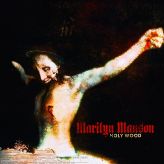
▶ Holy Wood (In the Shadow of the Valley of Death) Review (2000)
 SilentScream213 85/100
SilentScream213 85/100Jan 13, 2025 Likes : 2
Marilyn Manson’s third album in his original triptych, although chronologically this is the first in the story. A myriad of drama surrounds this album, with the columbine massacre occurring the previous year in which Manson was blamed. The album and concept is deeply layered within a tale exploring celebrity, consumerism, death, and much more. But writing about the history, c...



